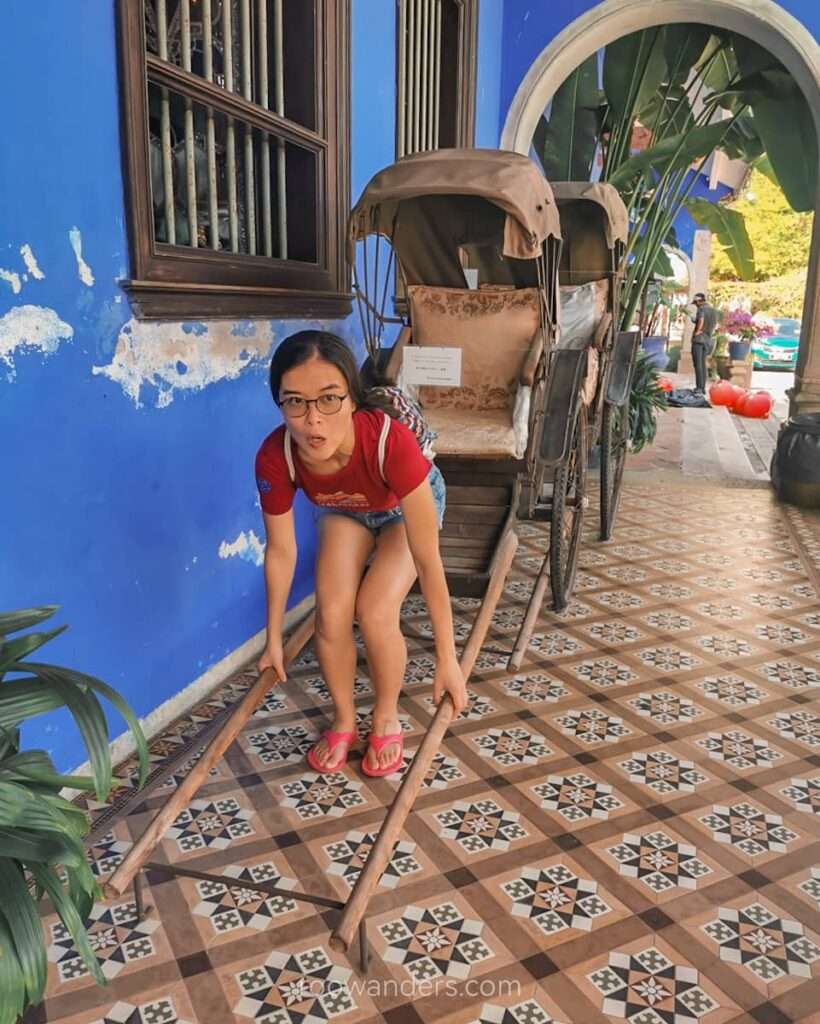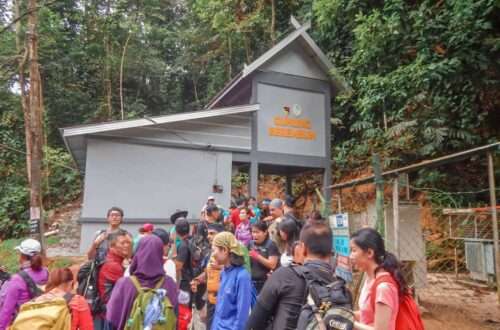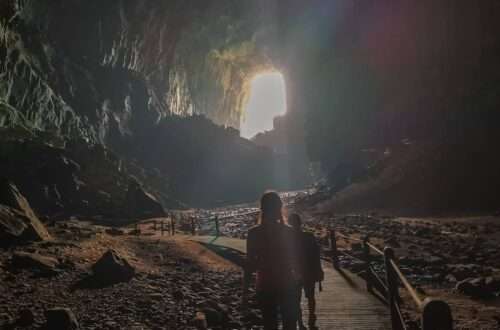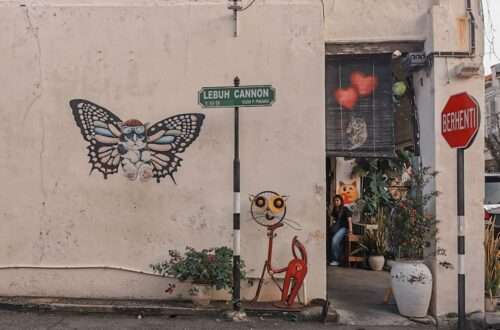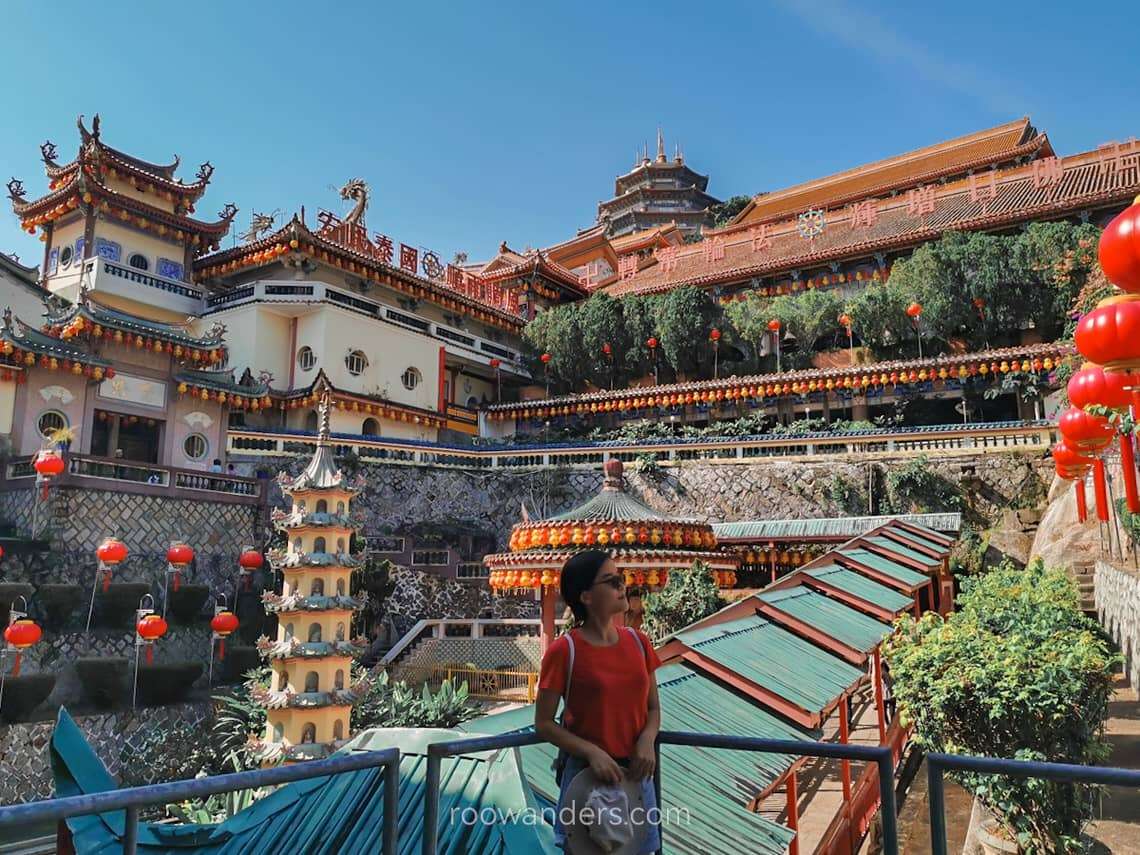
Kek Lok Si Temple: A Jewel of Penang
A trip up to Kek Lok Si Temple from the bustling town of Air Itam is a must for any first-time traveller of Penang Island.
Situated a mere 20 mins ride west from the attraction-dense Georgetown, this heritage site that is more than a century old is filled with colourful monasteries, glittering halls and thousands of Buddhist statues and motifs.
Thinking of visiting Kek Lok Si Temple but don’t know what to expect, where to eat, or how to go? Well, read on to find out!
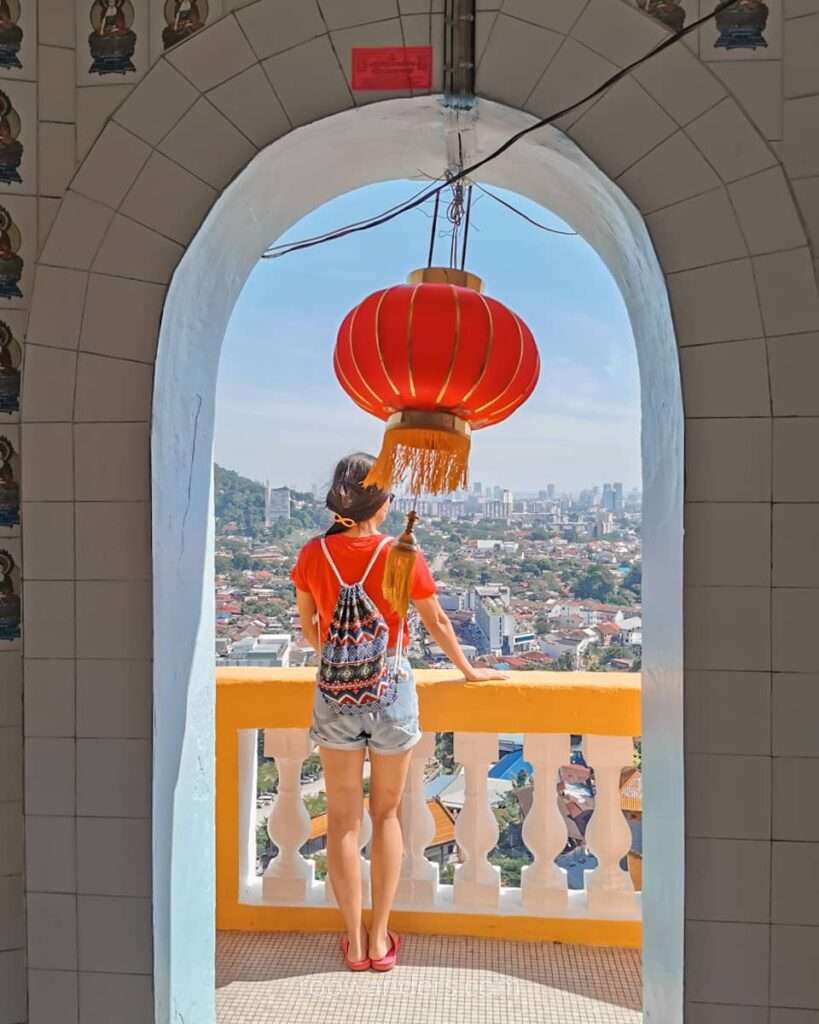
I visited Penang Island with my parents over 3D2N in Jan 2024. This post contains affiliate links that cost nothing to you but support my blog! It may also be updated periodically. As an Amazon Associate, I earn from qualifying purchases. Cheers!
History of Kek Lok Si Temple
One of the largest and oldest Buddhist temples in Southeast Asia, Kek Lok Si Temple was built in 1898 by the founder and first abbot, Venerable Beow Lean.
Venerable Beow initially wanted to seek donations to renovate a monastery in his hometown in China in 1885. However, he was later appointed as the new resident priest of the oldest temple in Penang – Kuan Yin Teng at Pitt Street – by the temple’s trustees. Moved by the local’s devotion to Buddhism, Venerable Beow decided to settle down in Penang.
He later noticed the hill in Air Itam resembling a crane about to take flight and built a Buddhist monastery on that auspicious hill. In Chinese mythology, cranes are auspicious motifs depicting longevity and wisdom. They are second only to the mythical bird fenghuang or the golden phoenix.
Under the blessings of his superiors and some generous donors (including Cheong Fatt Tze of the Blue Mansion), Venerable Beow saw the completion of several halls and temple complexes in the first phase of Kek Lok Si temple from 1891 to 1899. He returned to China and was gifted with Buddhist sutras and scripts handwritten by Emperor Guangxu and Empress Dowager Cixi.
His successor, Venerable Poon Teong, later built The Pagoda of Ten Thousand Buddhas, which features an amalgamation of three different architecture – Chinese, Thai and Burmese.
Between the third and sixth head priests, Kek Lok Si went through a troubling period due to political unrest in China. The current and sixth chief abbot, Venerable Jit Heng, became the first Malaysian to be appointed as head priest of Kek Lok Si. He was also responsible for completing the magnificent statue of Kuan Yin that towers over the temple complex.
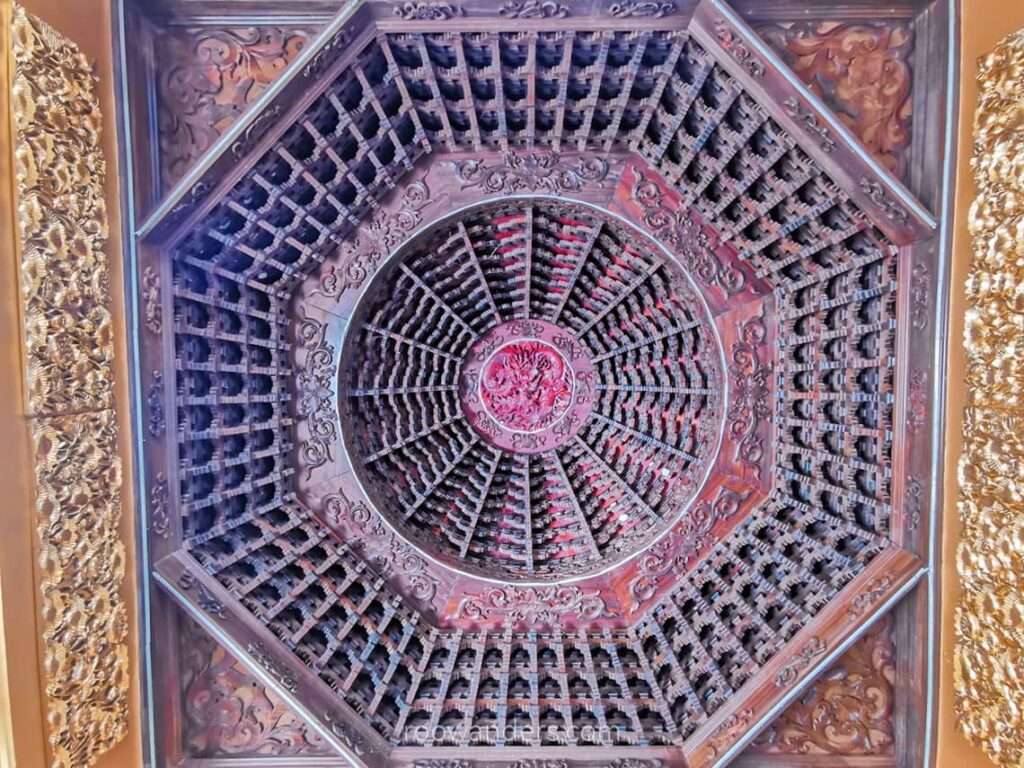
Getting to Kek Lok Si
By private hire/ taxi
If you’re staying around the area where most activities are – Georgetown – call for a grab to cover the 9 km west to Air Itam, where Kek Lok Si Temple is located.
For us, we travelled to Air Itam for breakfast (more about this below! 😋), before following the clear signages from the market of Air Itam to the foothills of the temple. Note that this is a 1 km walk – easy peasy, according to my parents.
By car
If you have a car and plan to park at Kek Lok Si Temple, know that there are three parking areas spread out over the hill. The lower tier is the ground level from Air Itam with a tortoise pond. The middle tier is where the main entrance, main prayer hall and pagoda are. While the magnificent bronze Kuan Yin is at the upper-tier carpark.
Parking fees are rumoured to be RM3 per entry.
Attire for Kek Lok Si Temple
You could wear casual for visiting, but that does not mean singlets, straps or super short shorts.
Put on shoes that are easy to take off, like sandals or jandals, since you’d constantly take them off to enter the inner temple/ prayer areas.
I wore a shirt, shorts, and my favourite jandals.
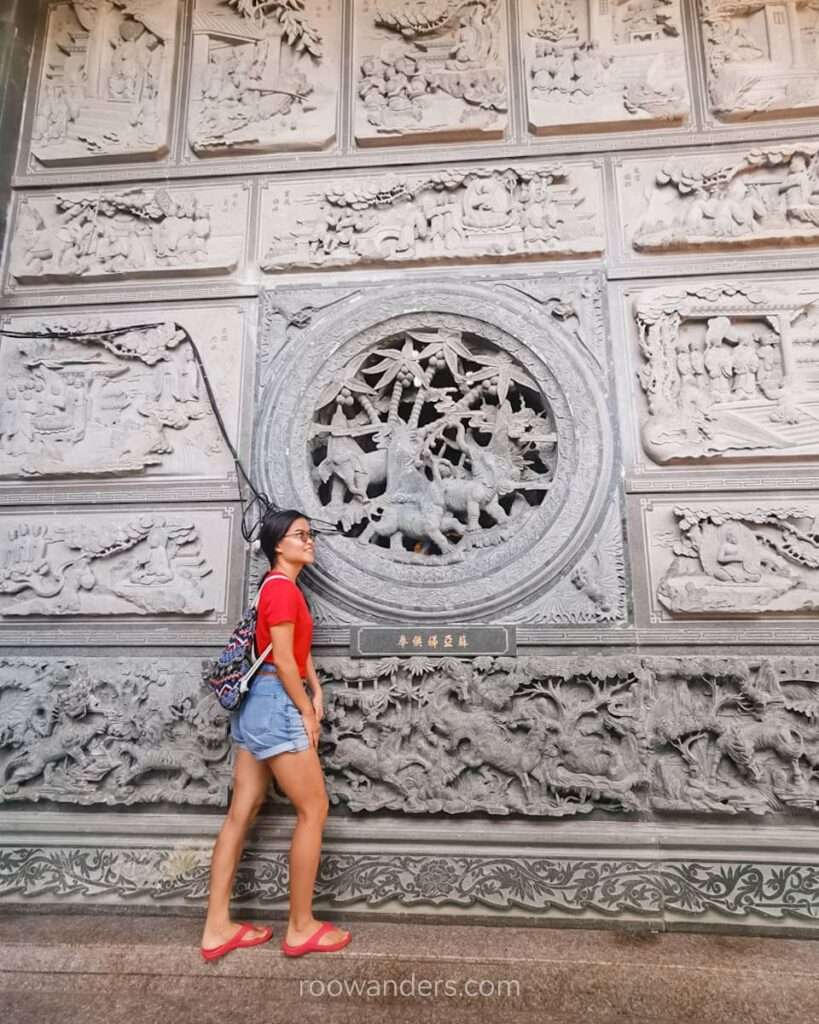
Best Time to Visit Kek Lok Si Temple
Anytime is a good time, but the best time is during the Chinese New Year period when the temple is decked in colourful lanterns and lights that light up after dark.
We saw workers arranging the fairy lights on the walls and rooftops of the buildings during our visit, which is about a month before the Year of the Dragon in 2024.
Attractions within Kek Lok Si Temple
You could roughly divide the temple compound into three areas – lower, middle and upper tier, based on the locations of the car park as explained earlier.
Lower Tier
As we crossed through the gates, what awaited us was a pond of tortoises. There’s honestly nothing much at the lower tier apart from that Liberation Pond. Unlike what its name suggests, you cannot liberate any tortoises in the Liberation Pond now that the pond is over-saturated with tortoises.
Getting to the middle tier by foot requires a good amount of walking up unshaded and steep walkways. If you think that sounds like a chore under the punishing afternoon sun, pay a small fee to a funicular and skip the long walk.
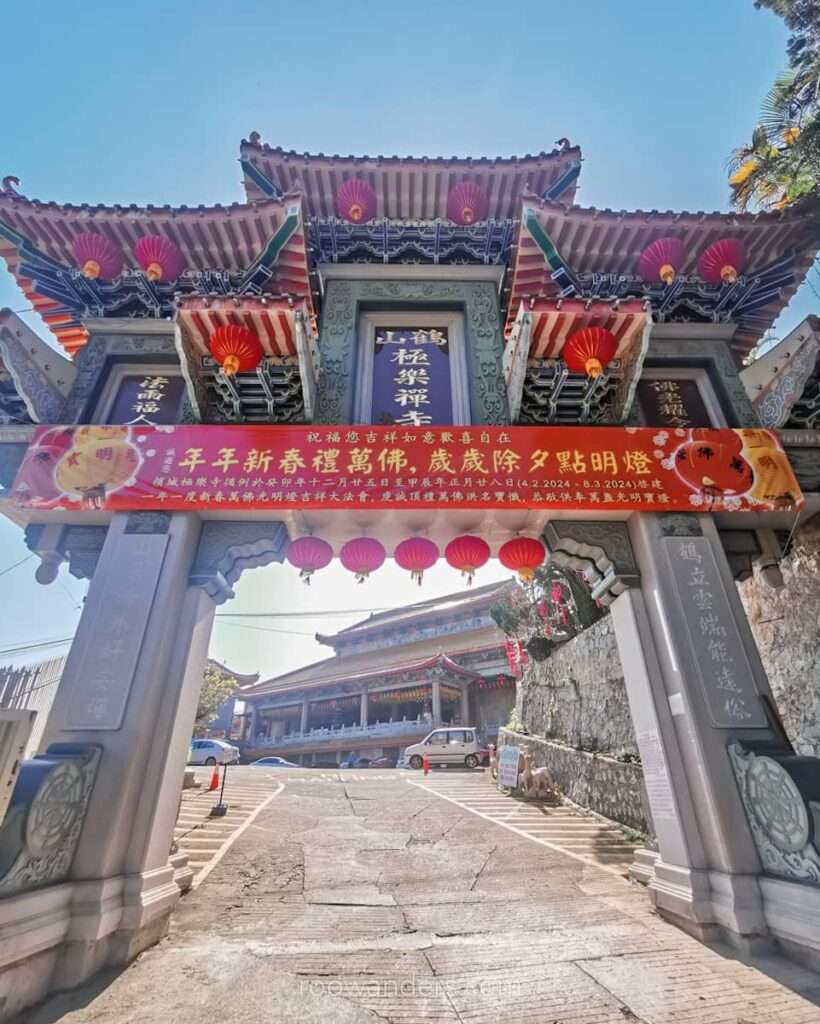
Middle Tier
What awaited us after our blazing hot walk was a Prayer Hall – the first that leads to many others. There’s an underground parking lot right underneath this Hall. You can find a vegetarian restaurant and a shop selling religious paraphernalia.
Within this first hall are three grand golden Buddha statues and walls full of smaller Buddha figurines. The floors are marble-tiled, while the ceilings are richly decorated with ornate paintings.
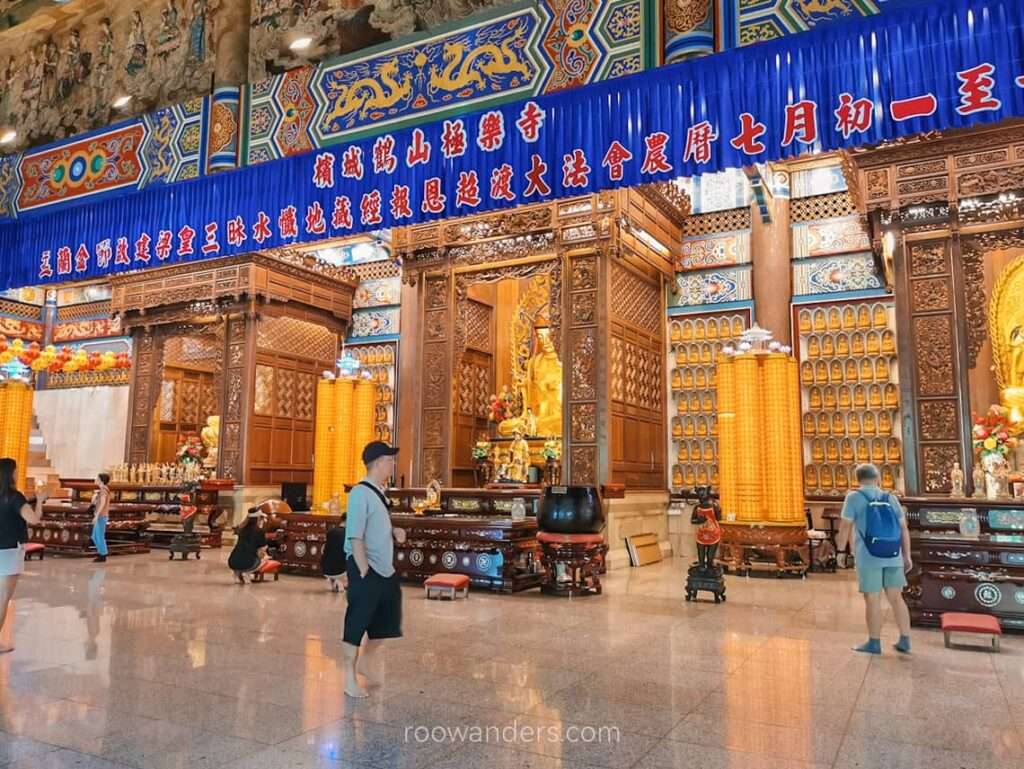
Outside the hall are several candles/ offerings and giant urns for the smouldering joss sticks. Above us are a huge cluster of brightly-hued yellow and red lanterns.
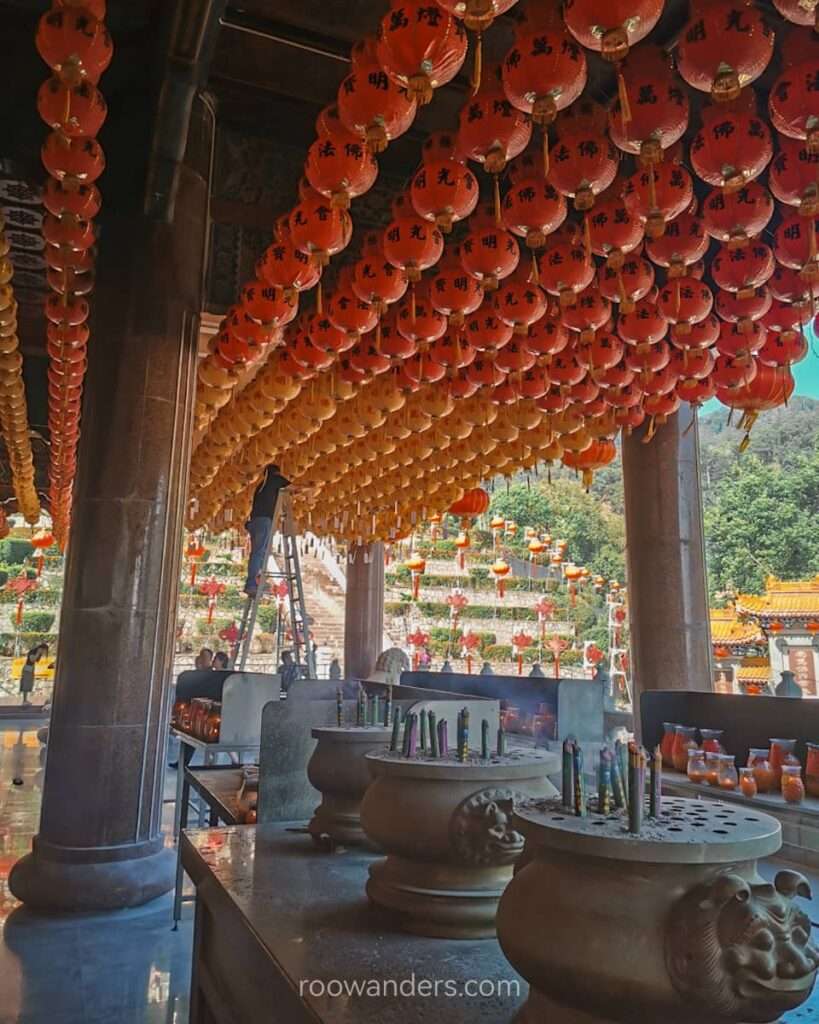
We ascended some stone steps and found ourselves walking through a passageway towards a central court that leads to the resplendent seven-tier pagoda, and another smaller three-tiered pagoda.
The smaller pagoda has a Thai-style Buddha within, a four-faced Buddha outside, and a fence of Buddha statues surrounding the pagoda. Nothing much apart from another shop selling religious miscellany.
We walked through the maze of courtyards and corridors and saw buddhas too many to count. Some notable ones include the giant golden Laughing Buddha and two fearsome guardian sentinels.
Main Prayer Hall
The Main Prayer Hall of Kek Lok Si has another set of three golden buddhas and tiles with lotus drawings. Lined up along both sides of the room are the 18 Arhats (18 luo han 十八羅漢). This hall is visibly smaller than the other halls containing the same number of Buddhas.
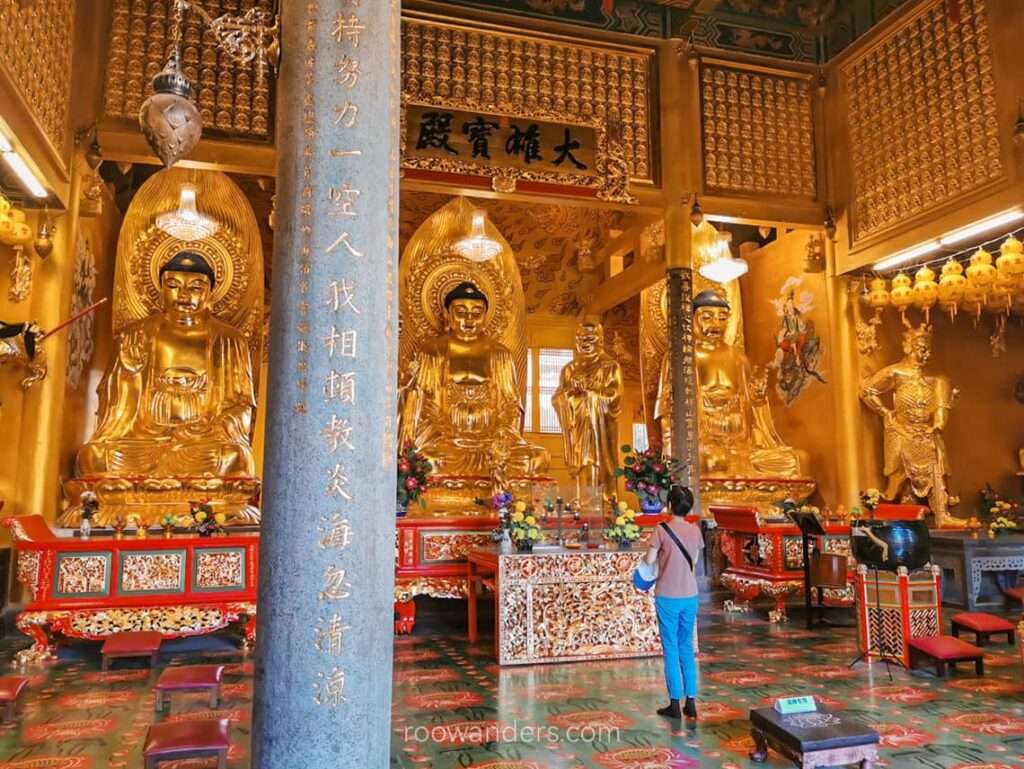
We also stopped by another prayer hall of giant black Buddhas, presumably made from wood polished to the highest perfection.
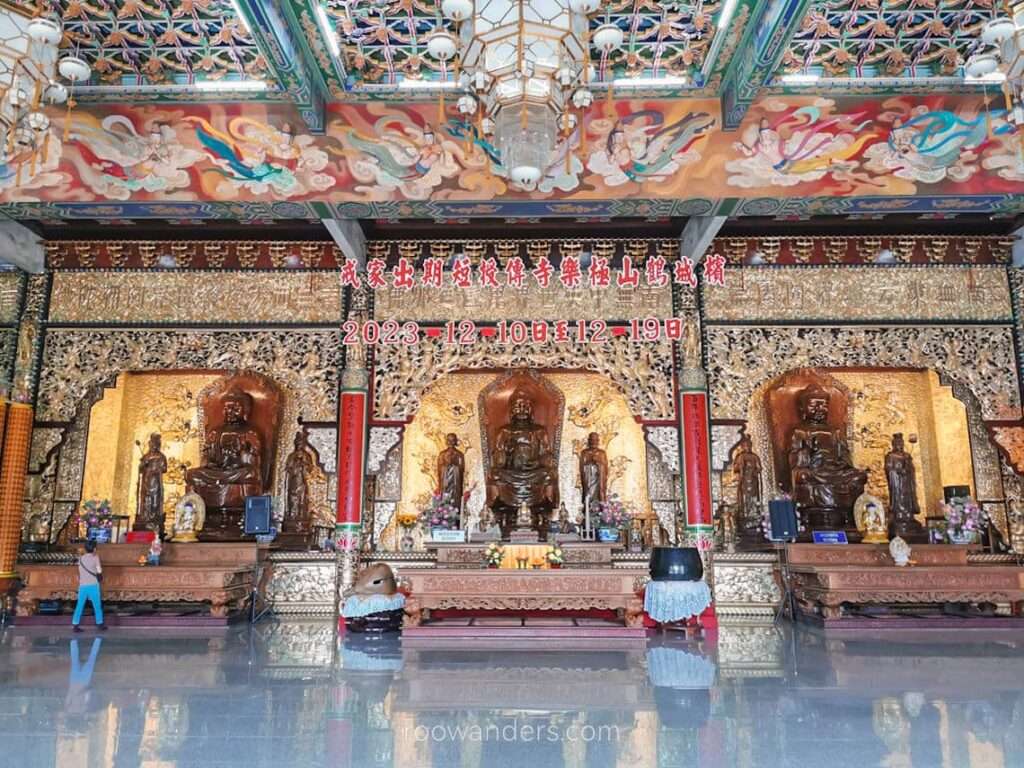
The Pagoda
The seven-tier pagoda deserves a special section as one of the two highlights – at least to me – at Kek Lok Si compound.
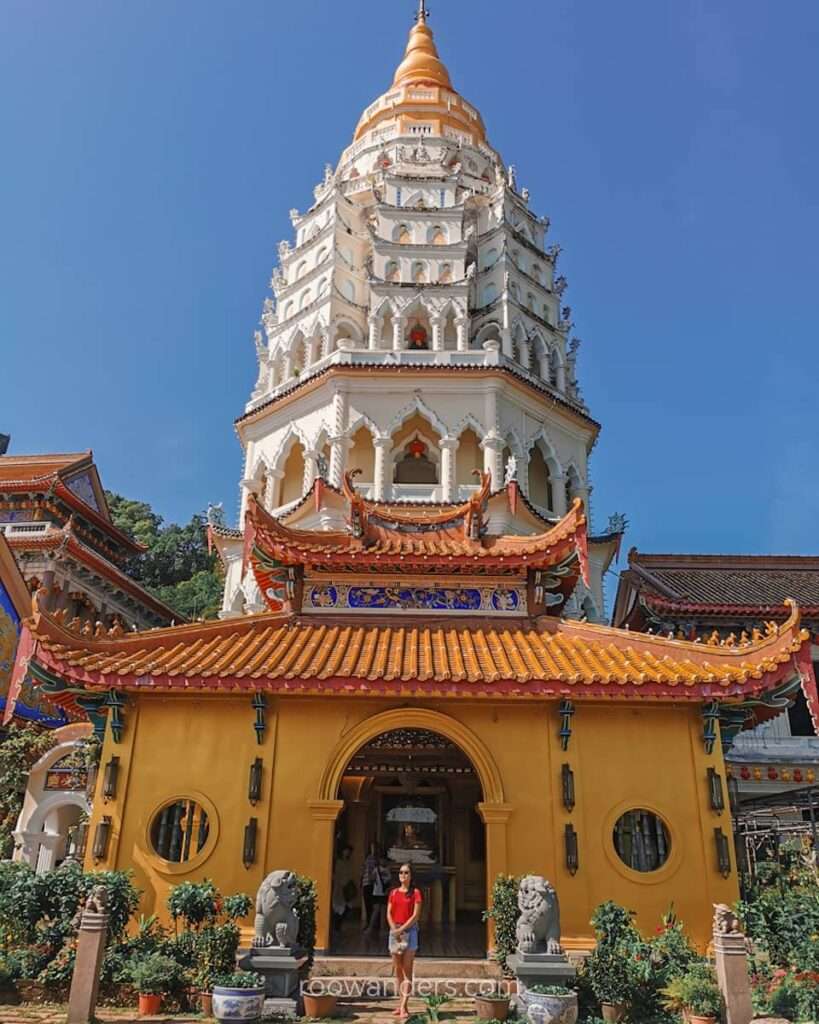
The 30m structure, also known as ‘Ban Po Thar’ or Pagoda of Ten Thousand Buddhas, was built sometime in 1930. Unlike the other pagodas I’ve seen from my travels, this pagoda combined architectural styles from three different ethnicities, which explains its odd façade when looked at from afar.
The bottom two are octagonal bases inspired by the Chinese; the middle four levels reflect the Thai, while the top spiral dome is from the Burmese.
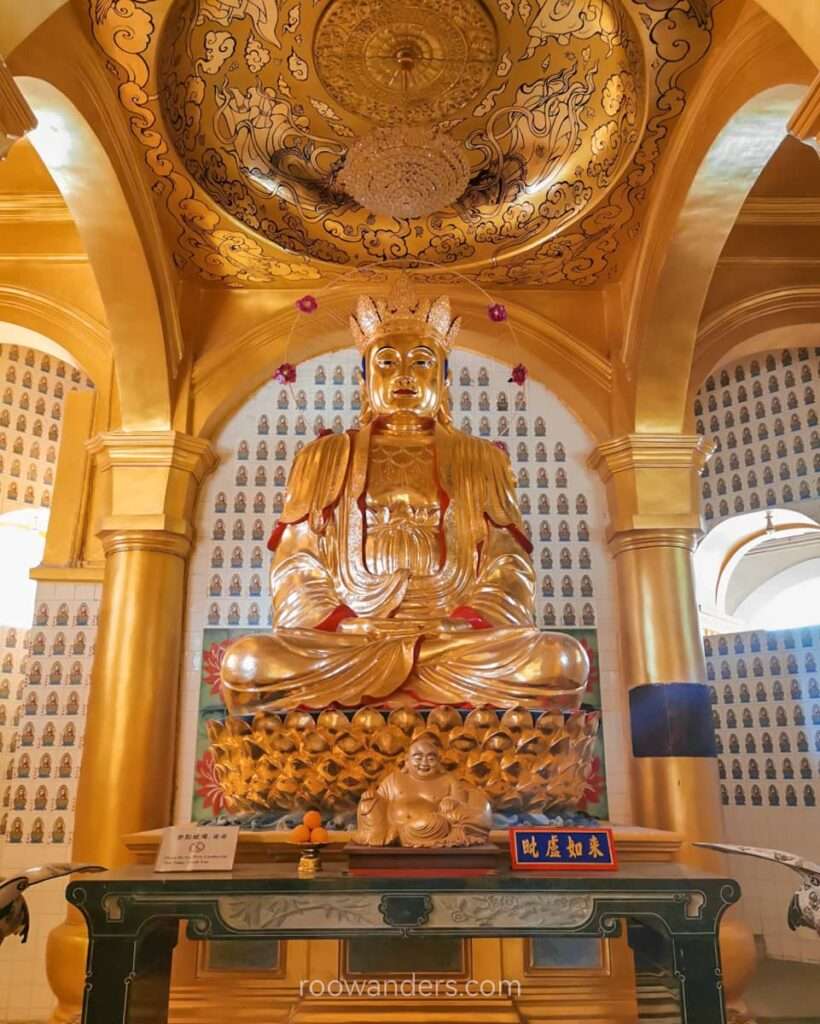
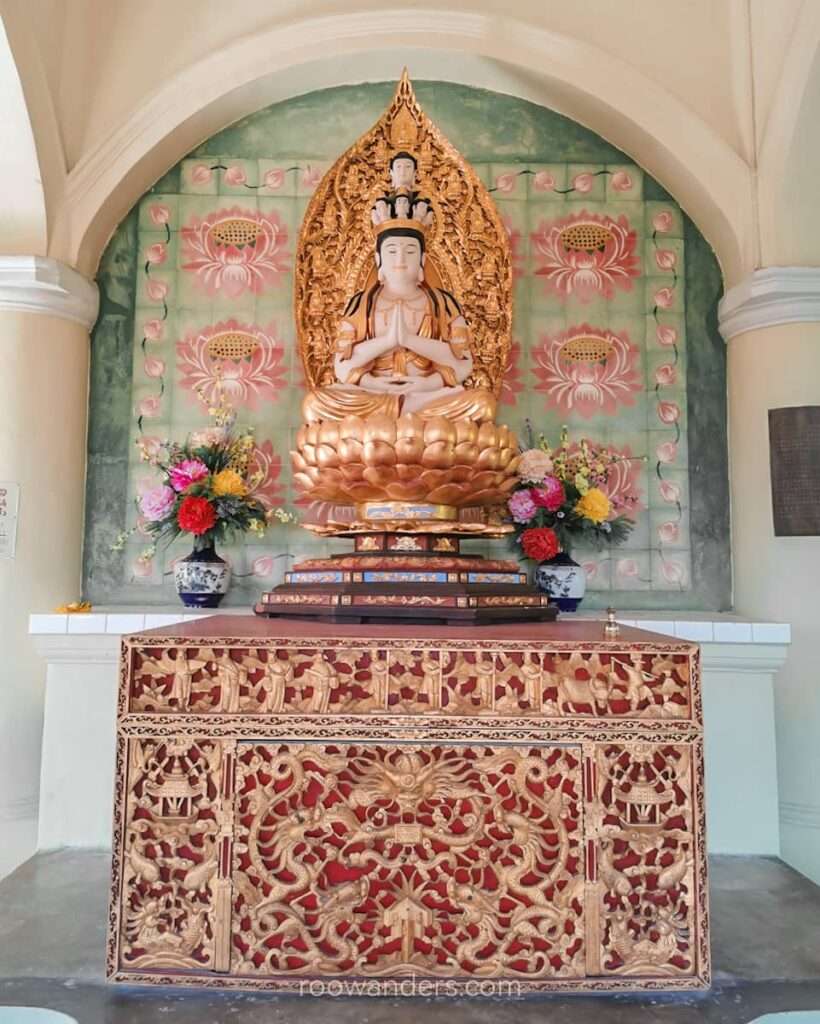
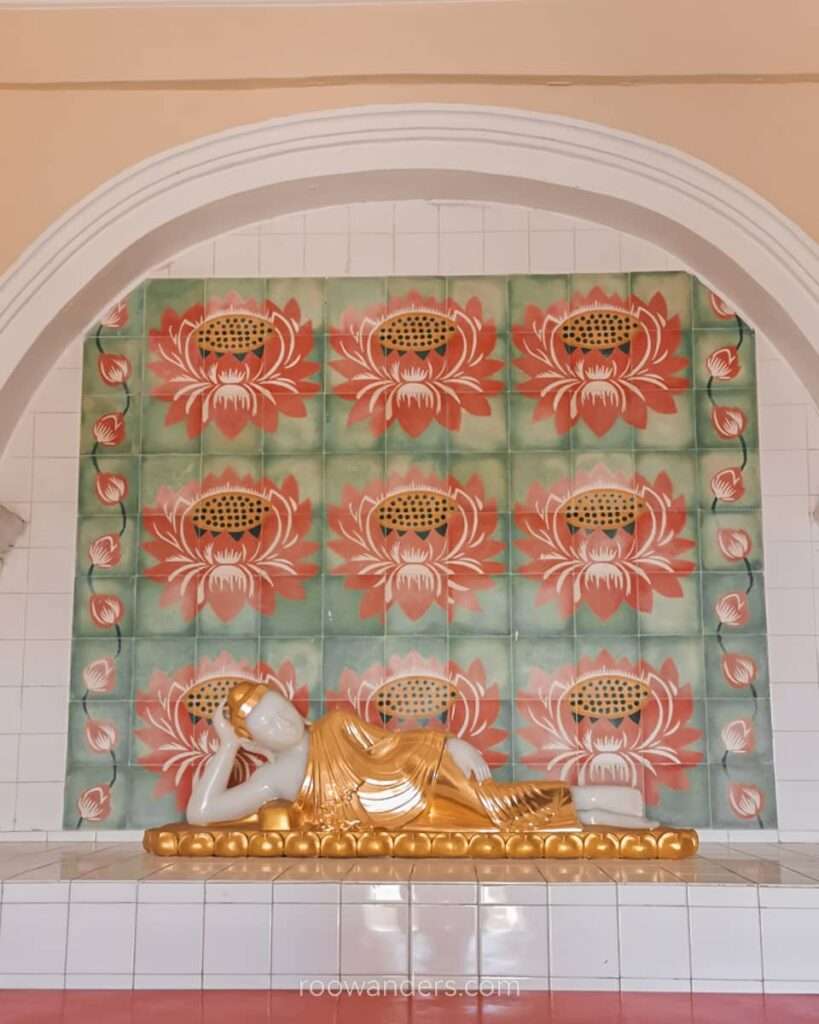
Climbing the narrow steps that encircle the tower took some time and patience. The chamber became narrower, and the steps smaller and more slippery as we inched towards the top.
A different Buddha statue resides on every level with tiles of somewhat different designs.
At the top of the pagoda open to visitation is the unobstructed view of Air Itam and beyond.
There’s a charming garden at the foot of the pagoda, and an arch containing the handwritten script of Empress Dowager Cixi.
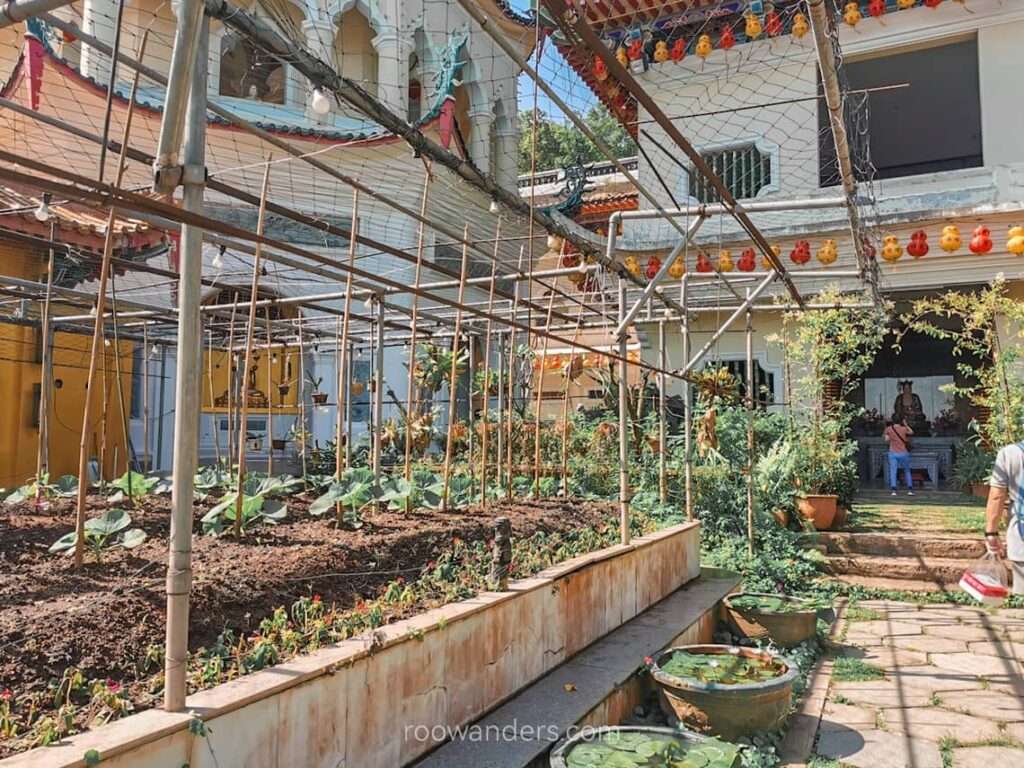
Upper Tier
Funicular
It’s a chore to walk from the middle tier to the upper tier – according to the lady manning the funicular between these two tiers. We have to exit via the main prayer hall of the middle tier and climb the hill to reach the upper tier.
Between 30 mins of walking and climbing under the hot sun and RM 6 for a short air-conditioned return trip in the funicular – which option sounds sensible?
With that, my parents conceded we squeezed into the little metal box with others towards the upper tier.
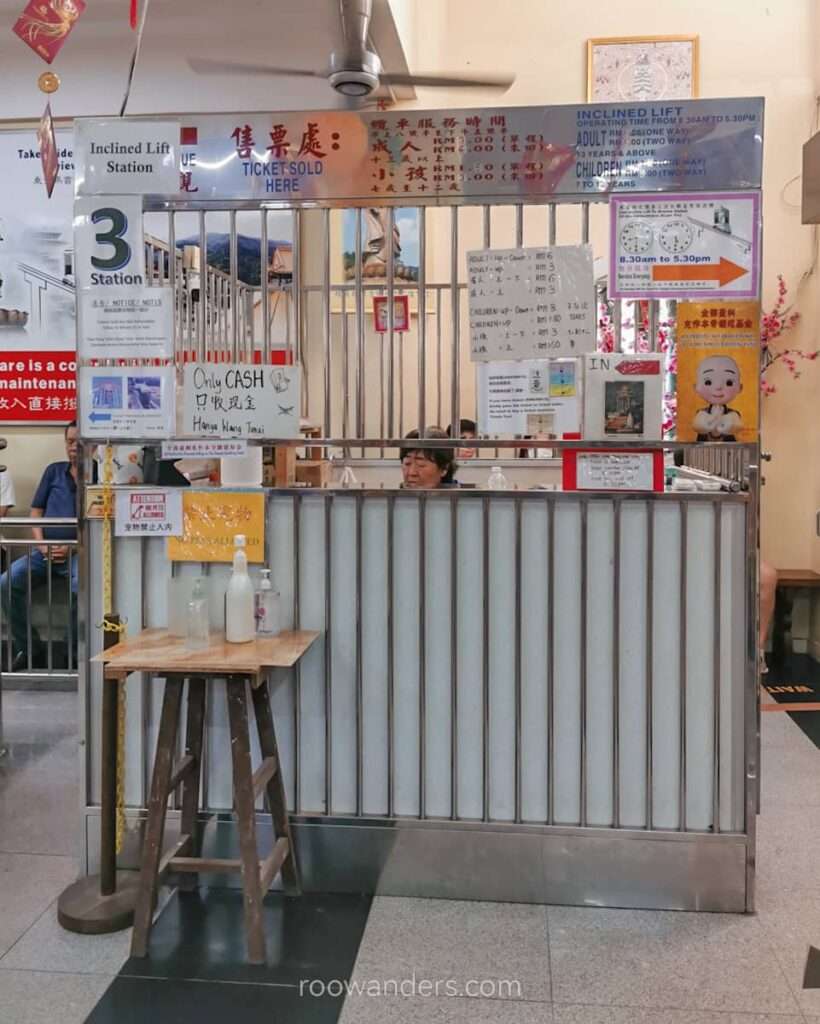
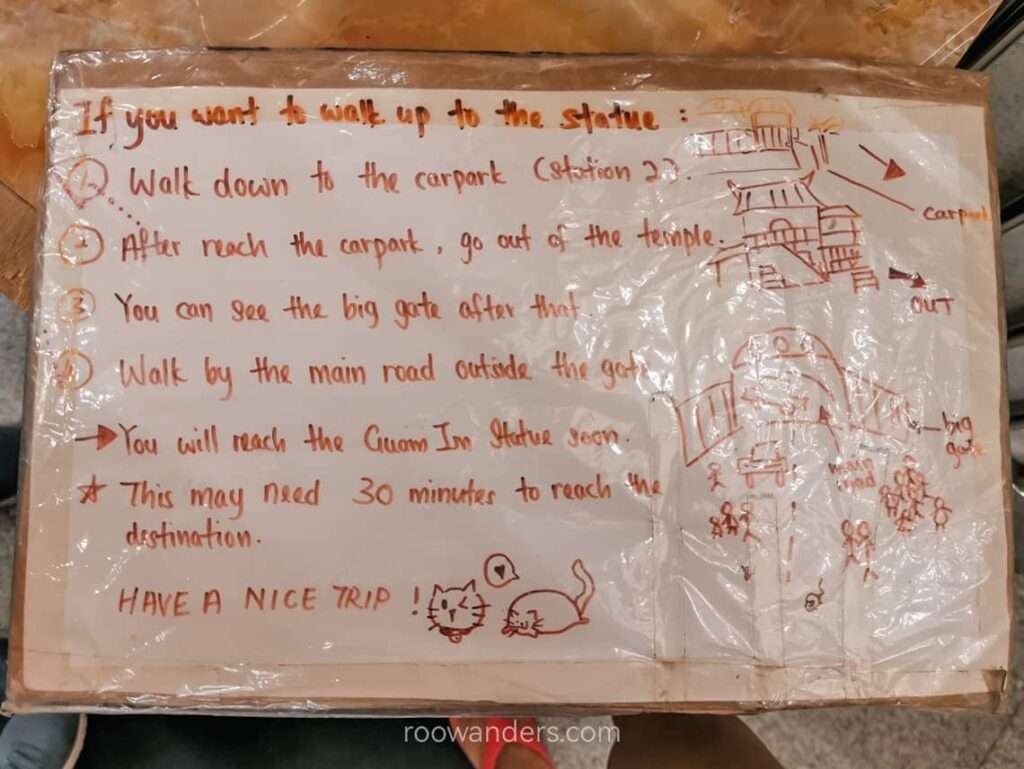
Kuan Yin Statue
According to various sources, an older version of Kuan Yin was once set atop the hill. However, the rather tacky white statue clothed in a blue robe was removed and replaced with the current uniform-coloured graceful bronze 30 m tall statue. She has a magnificent 20-storey pavilion protecting her from the elements, and scriptures blessed on the pillars surrounding her.
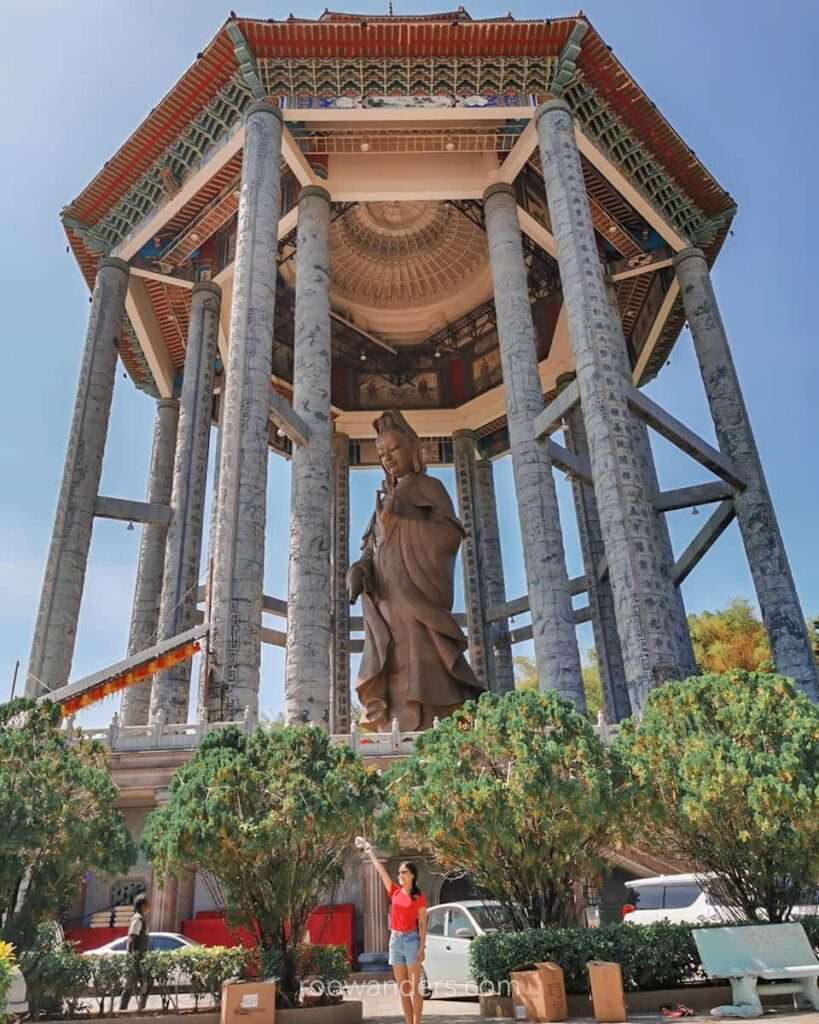
Side note, you can still find the bust of the first statue around the vicinity glancing at you from afar, with out-of-place Mickey Mouse and Donald Duck busts underneath her.
Unfortunately, access to the pavilion was closed, and we could only look at her from a distance and offer an incense stick from the tent at her foot.
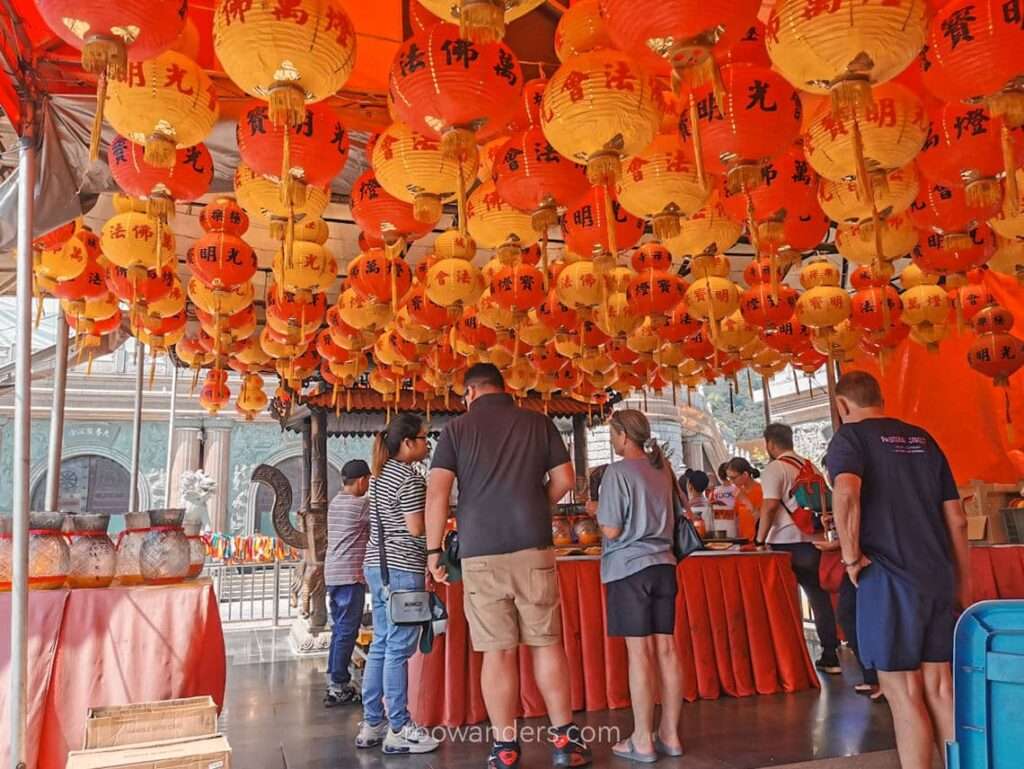
Miscellany around the upper tier
Our mission around Kek Lok Si Temple was pretty much completed when we reached the upper tier.
We rounded up what was left – a zodiac garden, another prayer hall, and a pavilion in the middle of a lake – before taking the funicular back to the middle tier and walking out to Air Itam for lunch.
Other Activities around the area
Lunch
Food is plentiful in the morning at Air Itam, but not in the afternoon. The afternoon is a world away from the crowded and chaotic morning market madness. Our Sunday afternoon was quiet with closed eateries and zero human traffic.
Nonetheless, we managed to snatch a meal from this economical rice shop at Air Itam Central Market selling a variety of side dishes.
The famous Air Itam Laksa was supposed to be still open during lunch hours. But if you’re like us and find out from the adjacent drink stall that the uncle isn’t working that day, know that there’s still the rice stall to save your growling stomach.
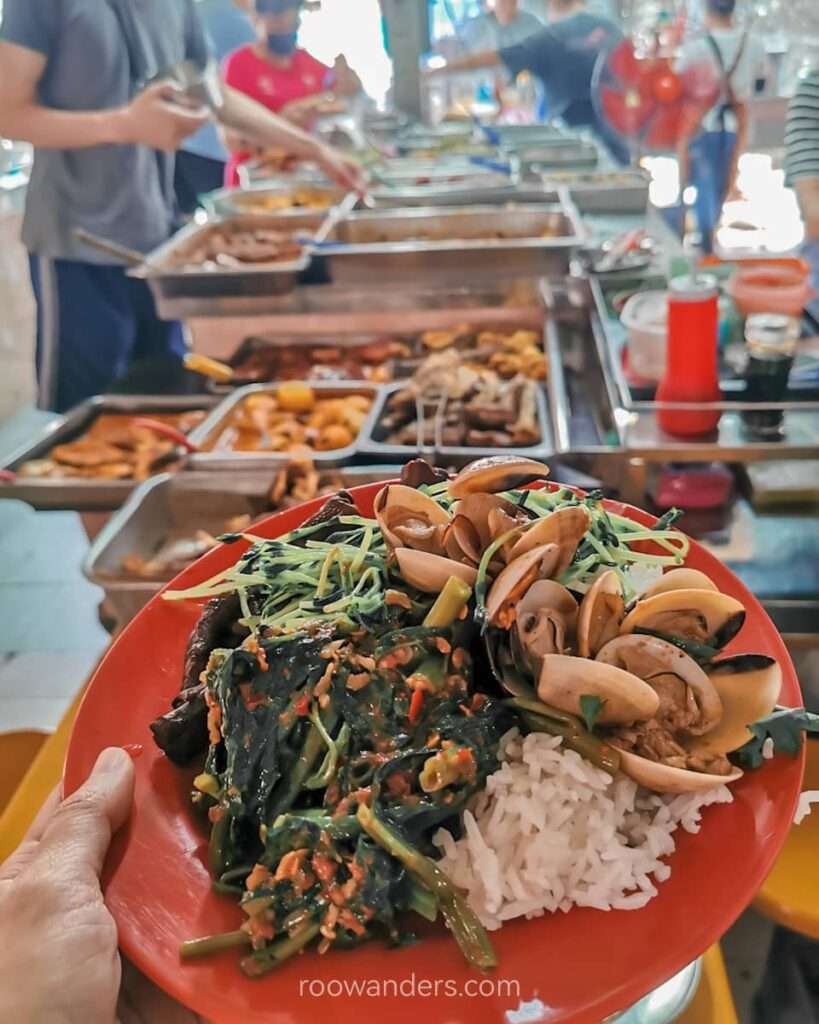
Penang Hill
Another attraction in Air Itam, apart from eating, is Penang Hill. Take the fastest funicular up the highest peak of Penang Island at 821 m, and enjoy the difference in climate up at the top.
Structuring your Penang Hill visit in the afternoon after Kek Lok Si is sensible to keep yourself cool from the menacing hot sun and high humidity.
However, note that most attractions at Penang Hill are ticketed – this was once a resort hill after all! The most highly recommended attractions are the treetop walk at The Habitat, and sipping some tea in the highest cafe of Penang.
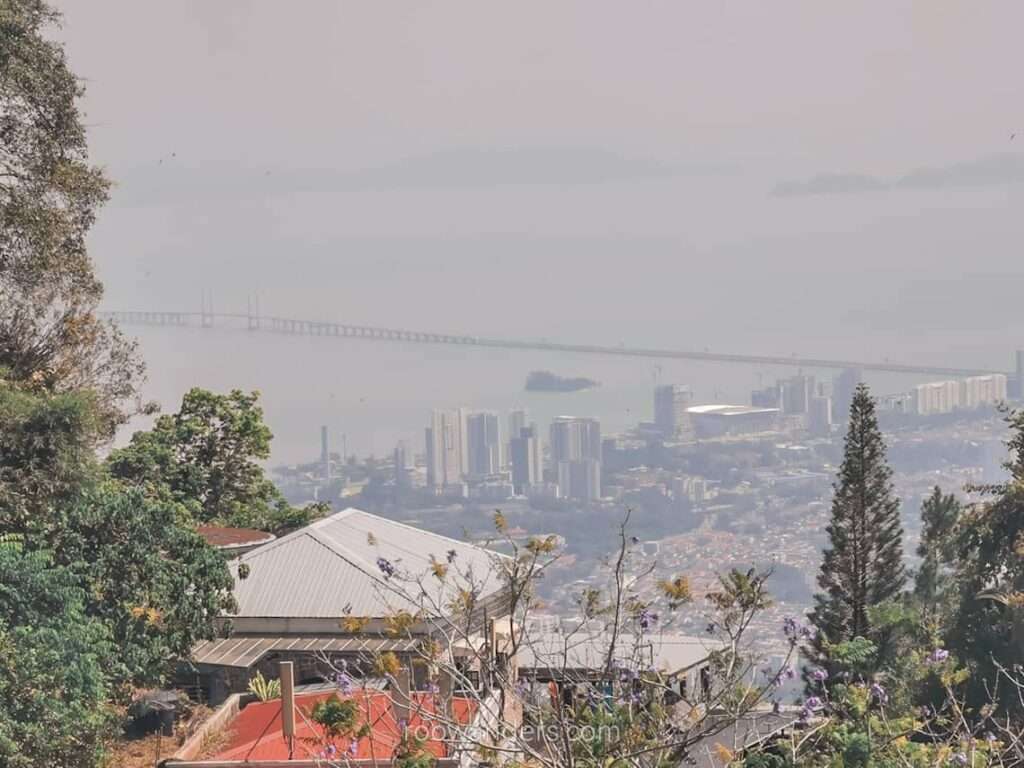
More Pointers
- Wear something light and casual. It can be warm in the temple compound, but please do not wear something too revealing.
- Slip-on shoes. You have to take off your shoes to enter the prayer halls.
- Plan your visit in the morning. Then spend your afternoon at chilly Penang Hill.
- Bring enough hydration. I like to use a thermal flask to keep my water cold. You could also buy mineral water from the shops scattered around the temple.
- Bring a portable fan. A wearable neck fan is nifty. If you’re worried about the heat.
- Have cash. If you’re planning to buy joss sticks for praying, or for donation.
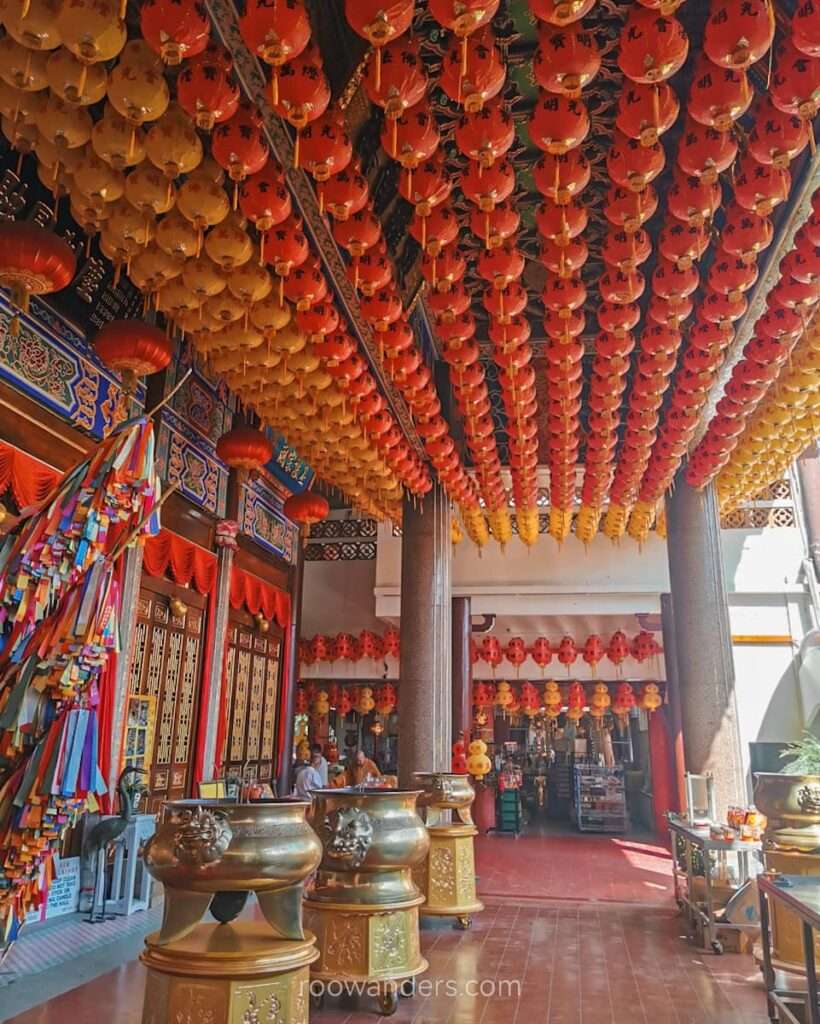
Conclusion and Rambles
Visiting Kek Lok Si is a highlight and a must for anyone coming to Penang. As one of the biggest, grandest and oldest Buddhist temples in Southeast Asia, it’s a shame if you’ve been to Penang but not Kek Lok Si. Can you really say you’ve been to Penang when you haven’t visited Kek Lok Si??
Apart from the wide diversity of delicious food, visiting this temple ranked top for my parents, especially my mom, as her last visit to Penang was at least four decades ago.
As for me, I found our visit to the pagoda fun – given the different Buddha statues and tiles on each level – and the giant Kuan Yin majestic inching towards heavenly.
